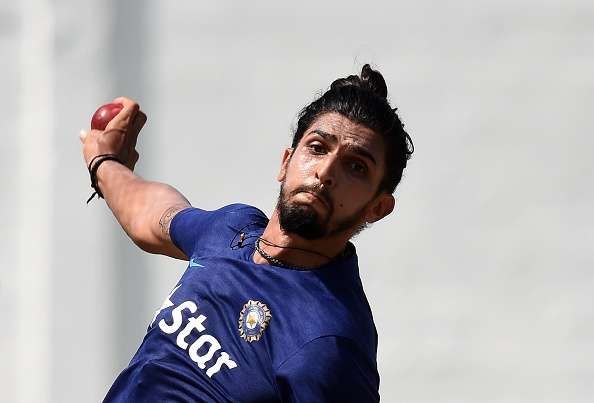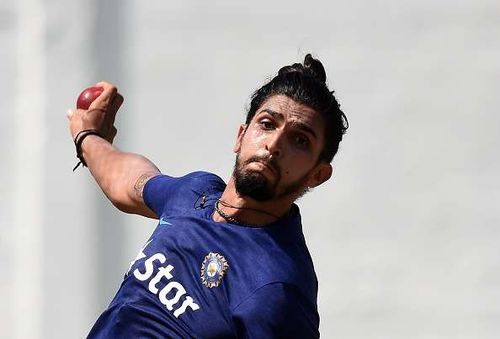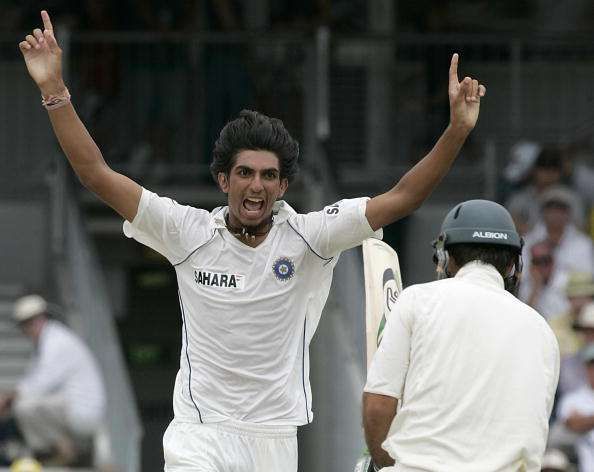
#SK Flashback: From creating havoc at Perth to leading India's attack, the sinusoidal career of Ishant Sharma
In the history of Indian cricket, the term fast bowler is not something we pride ourselves about as much as the production line of batsmen and the conveyor belt of spinners, who are on the downward curve with each passing day.
Most countries that have dominated world cricket at some point has its own fast bowling resources to feel proud about. When someone talks of the West Indies, it is their fast bowlers that spring to mind first. When you speak of Australia, it’s the same. Think of Pakistan and the Wasims and Waqars strike you.
That, however, isn’t the case with India, even though 22 years after his retirement, we still recollect the manner in which Kapil Dev toiled his way on barren sub-continental wickets.
Or the way in which Javagal Srinath bowled manfully without a supportive partner on most occasions on dustbowls almost every time India played at home.
Or the way Zaheer Khan , who converted himself from a young bowler with a brisk jump to someone who learnt the art of ‘out foxing’ a batsman, regardless of the score that he was batting on.
That’s why in order to continue this small line of quick men, it is imperative that Ishant Sharma, who turns 28 on Friday, raises his game and starts becoming the next fast bowler who will be remembered for his exploits.
Ishant first came on as an 18-year-old on India’s tour to Bangladesh in 2007.He was tall, didn’t look too muscular, but had a nice side-on action.
However, he made more noise for his innumerable front-foot no balls and little for his wicket-taking prowess.
But he was to show glimpses of the potential he had in the Test series against Pakistan that same year wherein the third Test, on a flat deck, at Bangalore, he scalped his maiden five-wicket haul.
It was the start of something and it showed that more was to come.
When Ishant scarred Ponting
A couple of months after that Bangalore performance, he boarded the flight to Australia and in the second Test in Sydney in early 2008, bowled splendidly in the first innings of the Test and with a bit more luck on his side could have taken a few more wickets than he did.
But it was in the next Test at the WACA in Perth that he displayed why the supporters of Indian cricket had reason to be optimistic about.
In a show of exceptional full-pitch bowling, he troubled all the Australian batsmen in the 1st innings and dished out particular treatment on Ricky Ponting in the second innings, troubling the Aussie skipper by consistently hitting the back of a good length and mixing it with full pitched balls. That sustained pressure from him paid off as he got the usually assured Ponting to edge one and Rahul Dravid did the rest at first slip.
A superstar was born and had given enough reason to feel optimistic about the future.
Post Australia and the start of the sinusoidal wave
Fast bowling is not just about getting the good batsmen, it is also about developing a method of setting up his dismissal. The first step in developing that is to able to create pressure on the batsman and not give much away.
In the case of Ishant, however, that trait just didn’t come about.
He never lost his pace. His action remained the same, but what changed were his seam position and an inability to hit the right areas with the regularity that one would expect.
As a result of that, he faced a lot of flak and found himself out of favour in the limited-overs format of the game more often than not.
That inconsistency was depicted in the second half of 2013 when he, along with Umesh Yadav and Bhuvneshwar Kumar bowled exceedingly well in England to help India win the Champions Trophy.
But 4 months later, in a vital phase of a match at Mohali, Ishant bowled a barrage of length deliveries in the death overs and James Faulkner paid him heavily for that, taking 30 runs of his over to help his side win what looked an unlikely win for most parts.
It was something that you didn’t expect from Ishant, who had played six years of international cricket
The tour to New Zealand: Birth of Ishant 2.0
In early 2014, India travelled to New Zealand for a five-match ODI and two match Test series.
After losing 4-0 in the ODIs and losing the opening Test at Auckland, the team travelled to Wellington, looking to square the series.
On a helpful pitch, Ishant produced his best performance in Tests for a while, bowling a much fuller length and reaped rewards for that, claiming 6 Kiwi wickets which paved the way for the hosts getting bowled out for 192.
It was a reminder to all that he still had it in him to deliver for India and he did just that on that morning at the Basin Reserve.
Cut scenes now five months later. The month is July. It is the fifth day of the second Test against England at Lord’s. England need 146 runs to win, India need 6 wickets.
On the last ball before lunch, Ishant digs one short to Moeen Ali. The left-hander is caught off guard and awkwardly fends as the ball takes his gloves and the fielder does the rest at short-leg.
Post lunch, an unforgettable drama unfolds as Ishant removes three English batsmen off the short pitch ball and paves the way for a famous yet rare overseas win, with figures of 7 for74.
It was a performance that was to raise his stock once again as India’s premier fast bowler and it once again epitomised the skill he possessed.
Looking forward to new challenges
With Zaheer Khan having retired from the game, it is now up to Ishant to really carry this mantle forward of being the leader of the fast bowling attack and in the past few months or so, he has shown that he can do that, by developing a certain level of consistency and imparting that lesson to the rest.
Under Virat Kohli in Tests, he really seems to have thrived and if he can build that new found game more, then we surely will see another fast bowling great from India.

